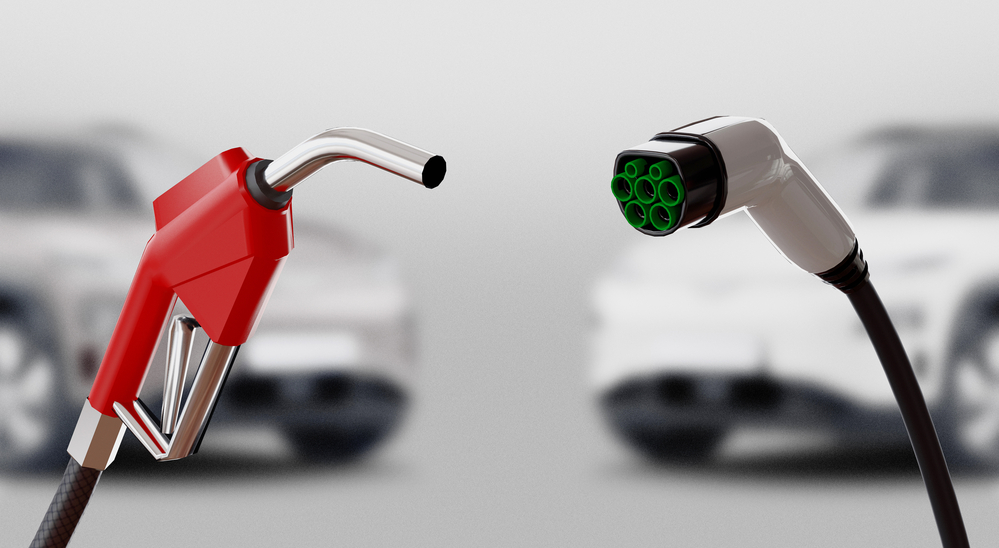Comparing EV to gas powered vehicles
Valerie Raskovic
Nov 22, 2023
When cross shopping fuel efficient conventional internal combustion vehicles and Electric Vehicles there are a few things you must consider. We have compiled 7 things you must consider prior to making your decision.
Vehicle Practicality is crucial, as the vehicle needs to be functional and align with your needs and lifestyle. One key consideration when selecting an electric vehicle revolves around your intended usage, particularly the distance of your daily commute. People that have longer daily commutes may experience anxiety worrying about the electric vehicles limited driving range. Running out of battery power before reaching a charging station, particularly during longer journeys is a real concern. Undoubtedly, range anxiety significantly influences people's decisions when considering the purchase of an electric car. Nevertheless, it should not be the only measure used to evaluate the practicality of the vehicle. So, let us explore the practicality of electric vehicles (EVs) by examining both their advantages and disadvantages.
Convenience
Electric vehicles (EVs) come with a blend of advantages and disadvantages concerning convenience.
- Charge From Home - EV owners can conveniently charge their vehicles at home, eliminating the need to visit gas stations regularly.
- Quiet Operation - EVs are known for their quiet operation providing a more peaceful driving experience, especially in urban environments.
- Limited Driving Range – Compared to their gas-powered counterparts most EV models have limited driving ranges on a single charge, which can be a concern for long-distance travel.
- Limited Charging Infrastructure - While improving, the charging infrastructure may not be as widespread as gas stations, which could limit the convenience for some users. EVs rely on the electricity grid and power outages or grid limitations can impact the ability to charge the vehicle.
- Longer Charge Time - Charging an EV can take longer than refueling a gas-powered vehicle, especially without access to fast-charging stations.
- Fewer EV models to choose from - While the variety of EV models is increasing, the market may still have fewer options compared to traditional vehicles.
Environmental Impact
EVs produce zero tailpipe emissions, contributing to lower air pollution and a smaller carbon footprint, especially if charged with renewable energy sources. It's crucial to note that while electric vehicles (EVs) don't emit tailpipe emissions their manufacturing process requires significantly more resources compared to equivalent gas vehicles. The extraction and processing of materials for lithium-ion batteries, in particular, can be environmentally messy and detrimental. However, if you are planning to keep the vehicle over 5 years the EV will offset the vehicles environmental impact over time.
Operating Cost & Maintenance
Generally, EVs have lower operating costs per mile due to fewer moving parts, less maintenance and potentially lower energy costs. Maintenance costs are higher for gas powered vehicles due to the complexity of internal combustion engines and more moving parts. Also, the cost of electricity for charging is often lower than the cost of gasoline, resulting in potential savings over time. However, it is important to keep in mind even as EV’s are the clear winners in the maintenance comparison, most EVs may require a very expensive battery replacement within the first 12 years. Over time, the performance of EV batteries may degrade, potentially reducing the driving range and necessitating costly battery replacements.
Performance
Gas and Electric vehicles deliver power very differently. While electric motors deliver power more efficiently, providing instant torque and smooth acceleration, gas vehicles are generally slower to accelerate while providing better top speed performance and efficiency amongst many new vehicle models. Gas vehicles tend to be nimbler in tight cornering and during extreme maneuvers due to their lighter weight as the lithium-ion battery tends to add over a thousand pounds to the vehicles curb weight. For individuals who harbor nostalgia for the thunderous growl of a traditional engine, the transition to an electric car might make them feel disconnected or out of their element.
Price & Incentives
The initial purchase price of EVs can be higher than that of comparable gas-powered vehicles, mainly due to the cost of batteries. However, many states and governments offer incentives such as tax credits, rebates and access to carpool lanes to promote the adoption of EVs.
Technology
Electric vehicles often come equipped with cutting edge technology, making them well-suited for integration with autonomous driving features. On the other hand, traditional gas-powered cars operate using internal combustion engines, burning fossil fuels to generate power. While these vehicles have a well-established infrastructure and offer a familiar driving experience, they face challenges related to emissions and fuel dependency. The ongoing technological evolution in both EVs and conventional cars showcases the industry's dynamic nature as it strives to balance innovation, efficiency and environmental sustainability.
Resale Value
The resale value of EVs can be uncertain as it depends on factors like advancements in battery technology and overall market acceptance. However, the ongoing shift towards electric vehicles may impact the resale values of traditional cars as the market dynamics evolve. Overall, the resale value comparison between EVs and gas-powered cars is subject to the evolving landscape of the automotive industry and the preferences of consumers.
When evaluating Electric Vehicles (EVs) against Gas-powered vehicles, various pros and cons come into play. Ultimately, the choice between the two depends on the consumer's individual needs and lifestyle. As technology and charging infrastructure continue to advance, the advantages and disadvantages of each option may shift. However, persistent factors like range anxiety, charging infrastructure availability and initial costs could still be factors influencing the decision-making process for certain consumers.
Read more articles

